接上篇
swaggerUI提供了可视化界面帮助我们管理服务的访问路口,这就需要我们在代码中规范我们的书写格式。并且在swagger的界面上还能够模拟浏览器对服务进行访问。
接口总览
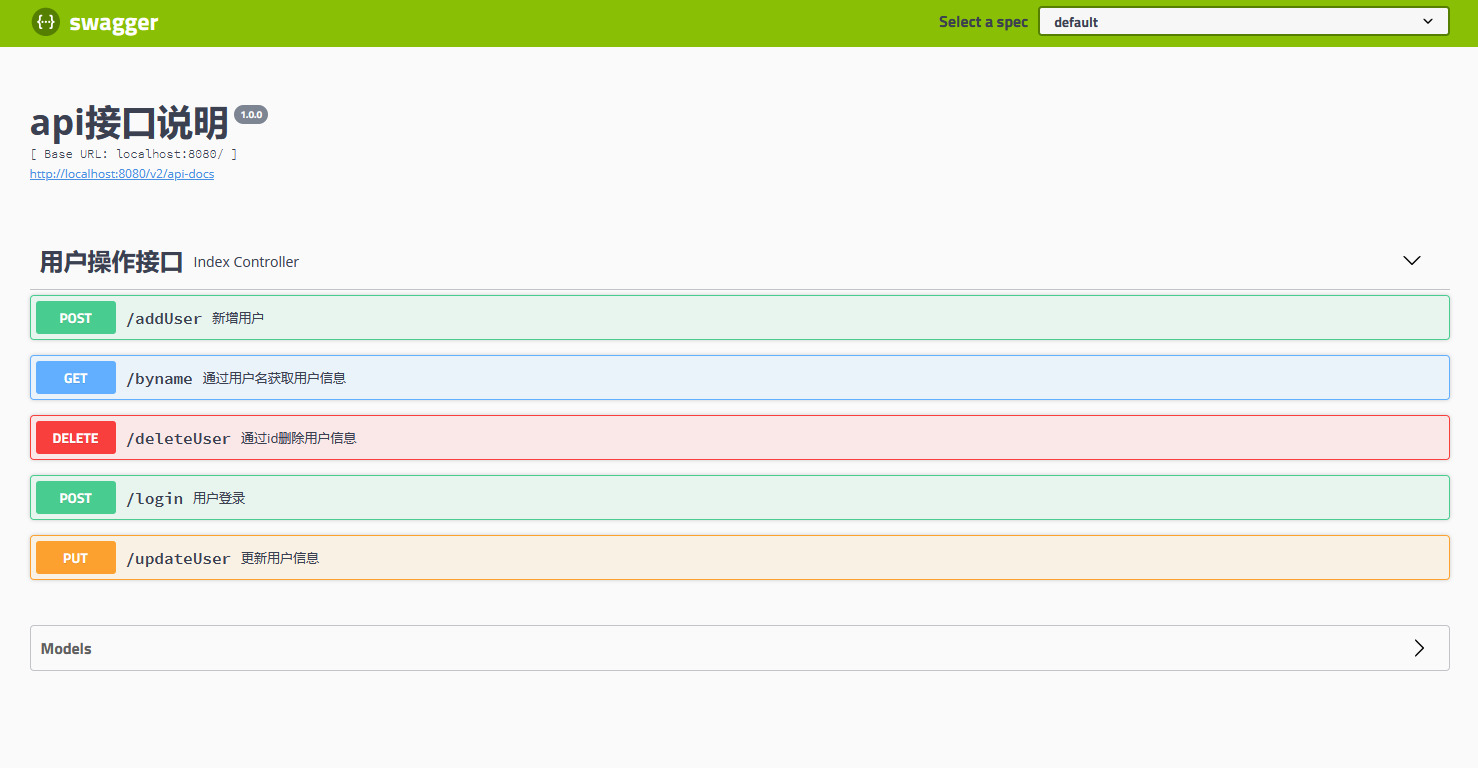
创建POST接口
- 创建一个保存用户的接口
@RequestMapping(value = "/addUser",method = RequestMethod.POST)
@ApiModelProperty(value="user",notes = "用户信息的json串")
@ApiOperation(value = "新增用户", notes="返回新增的用户信息")
public Object adduser(@RequestBody User user){
Map map = new HashMap();
map.put("msg","success");
map.put("code","1");
return map;
}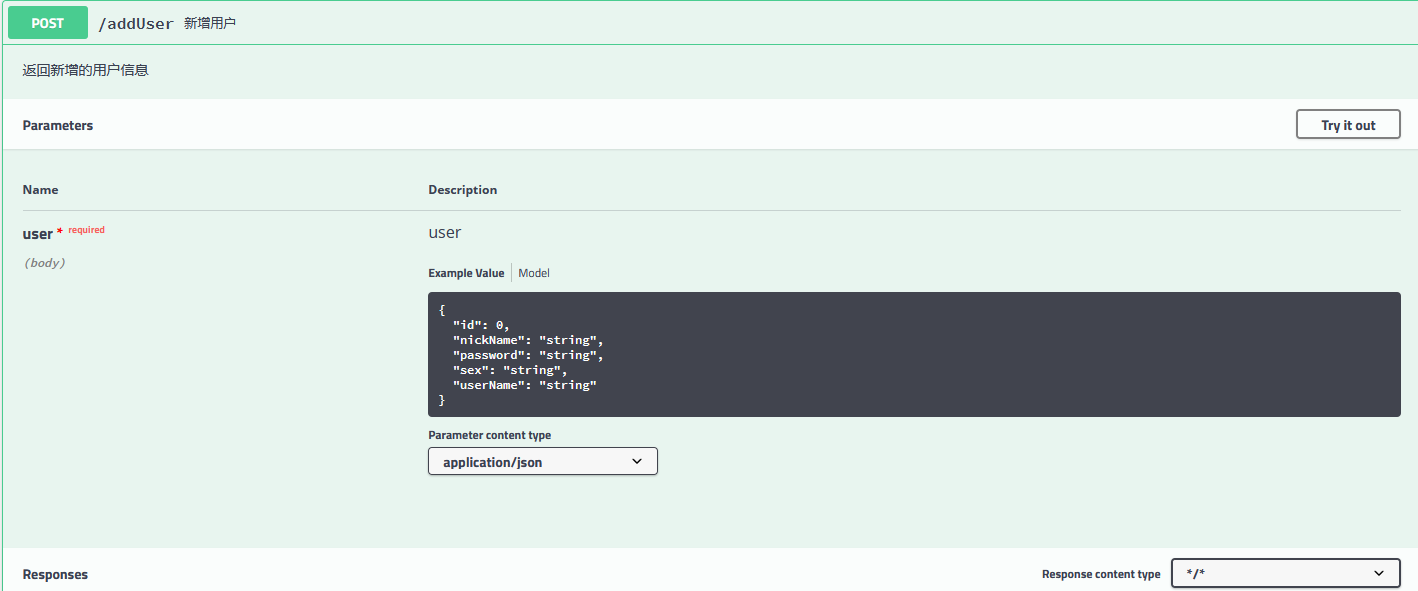
创建一个PUT接口
- 修改用户接口
@RequestMapping(value = "/updateUser",method = RequestMethod.PUT)
@ResponseBody
@ApiModelProperty(value="user",notes = "修改后用户信息的json串")
@ApiOperation(value = "更新用户信息", notes="返回更新的用户信息")
public Map<String,Object> updateUser(@RequestBody User user) {
Map map = new HashMap();
map.put("msg","success");
map.put("code","1");
return map;
}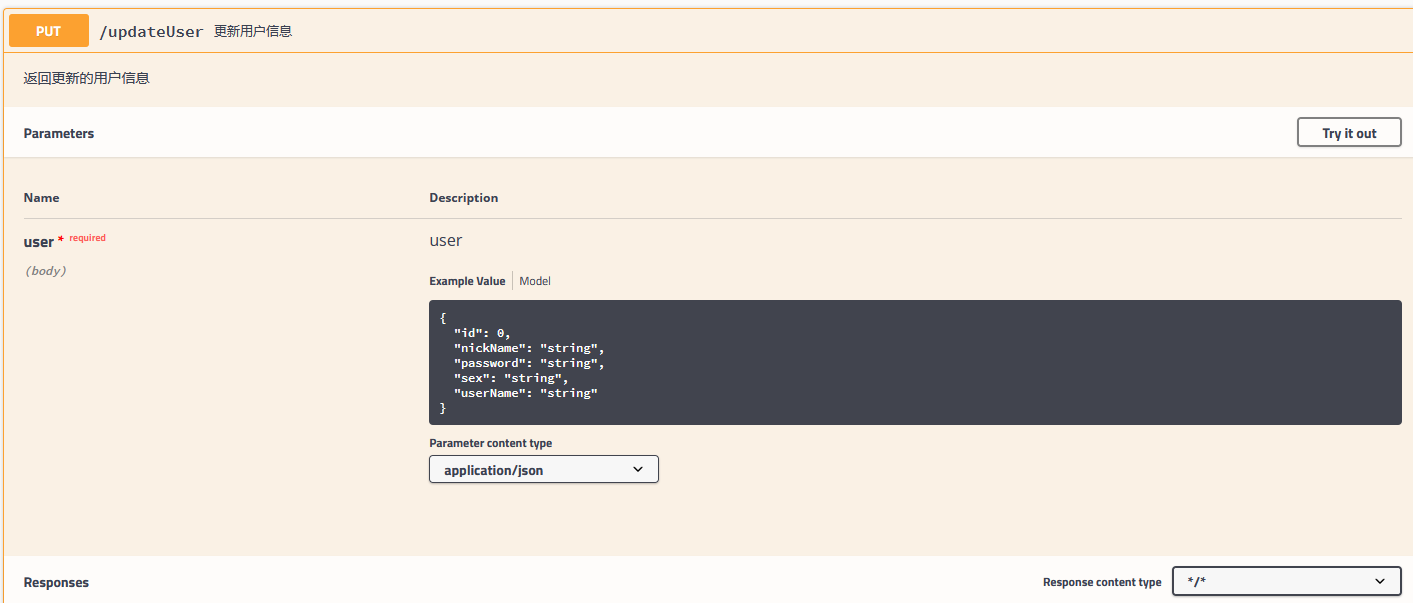
创建一个GET接口
- 创建获取用户信息的接口
@RequestMapping(value = "/byname", method = RequestMethod.GET)
@ResponseBody
@ApiImplicitParam(paramType = "query",name= "username" ,value = "用户名",dataType = "string")
@ApiOperation(value = "通过用户名获取用户信息", notes="返回用户信息")
public Object byname(@RequestParam @ApiParam(name="username",value="名字",required = true)String username) {
Map map = new HashMap();
map.put("msg","success");
map.put("code","1");
return map;
}
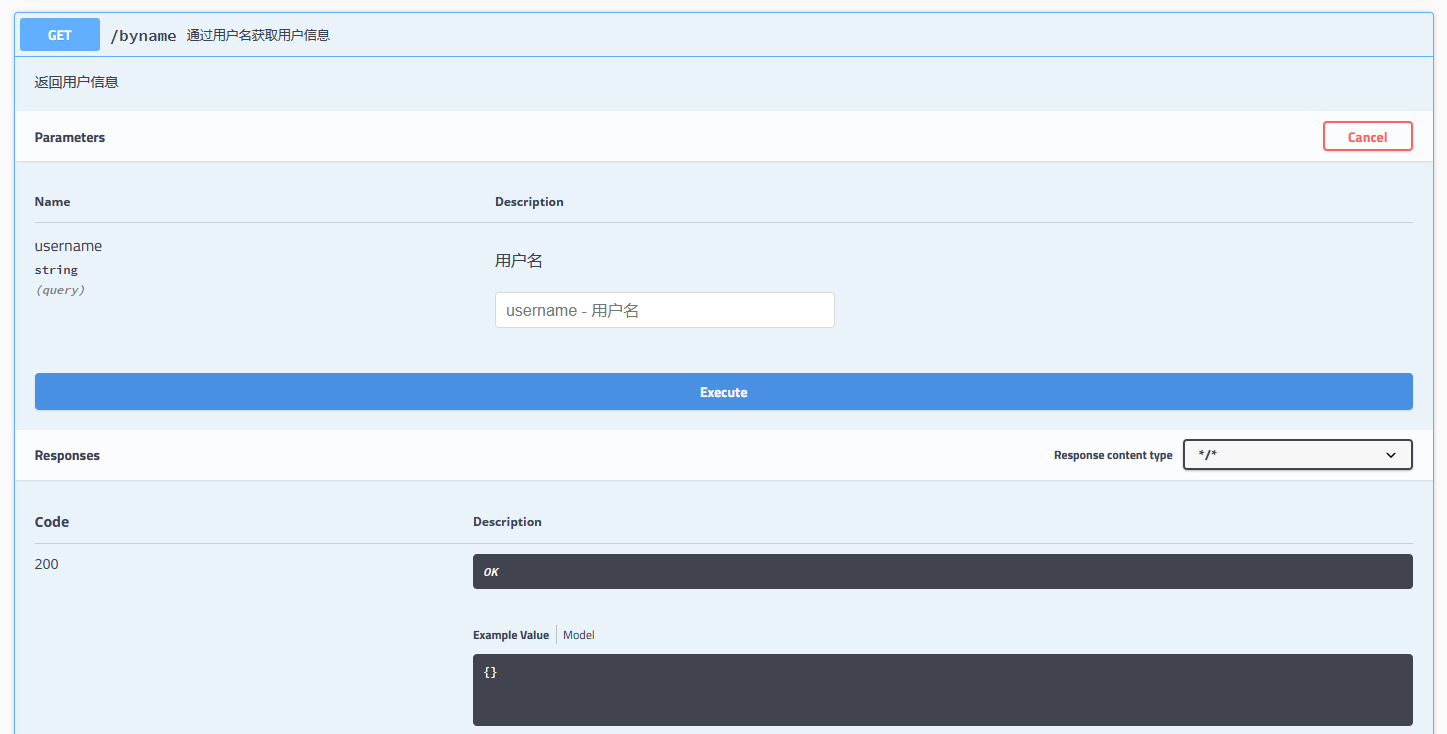
创建一个DELETE接口
@RequestMapping(value = "/deleteUser", method = RequestMethod.DELETE)
@ResponseBody
@ApiOperation(value = "通过id删除用户信息", notes="返回删除状态1 成功 0 失败")
public Map<String,Object> deleteUser(@RequestParam @ApiParam(name="id",value="id",required = true) Integer id) {
Map map = new HashMap();
map.put("msg","success");
map.put("code","1");
return map;
}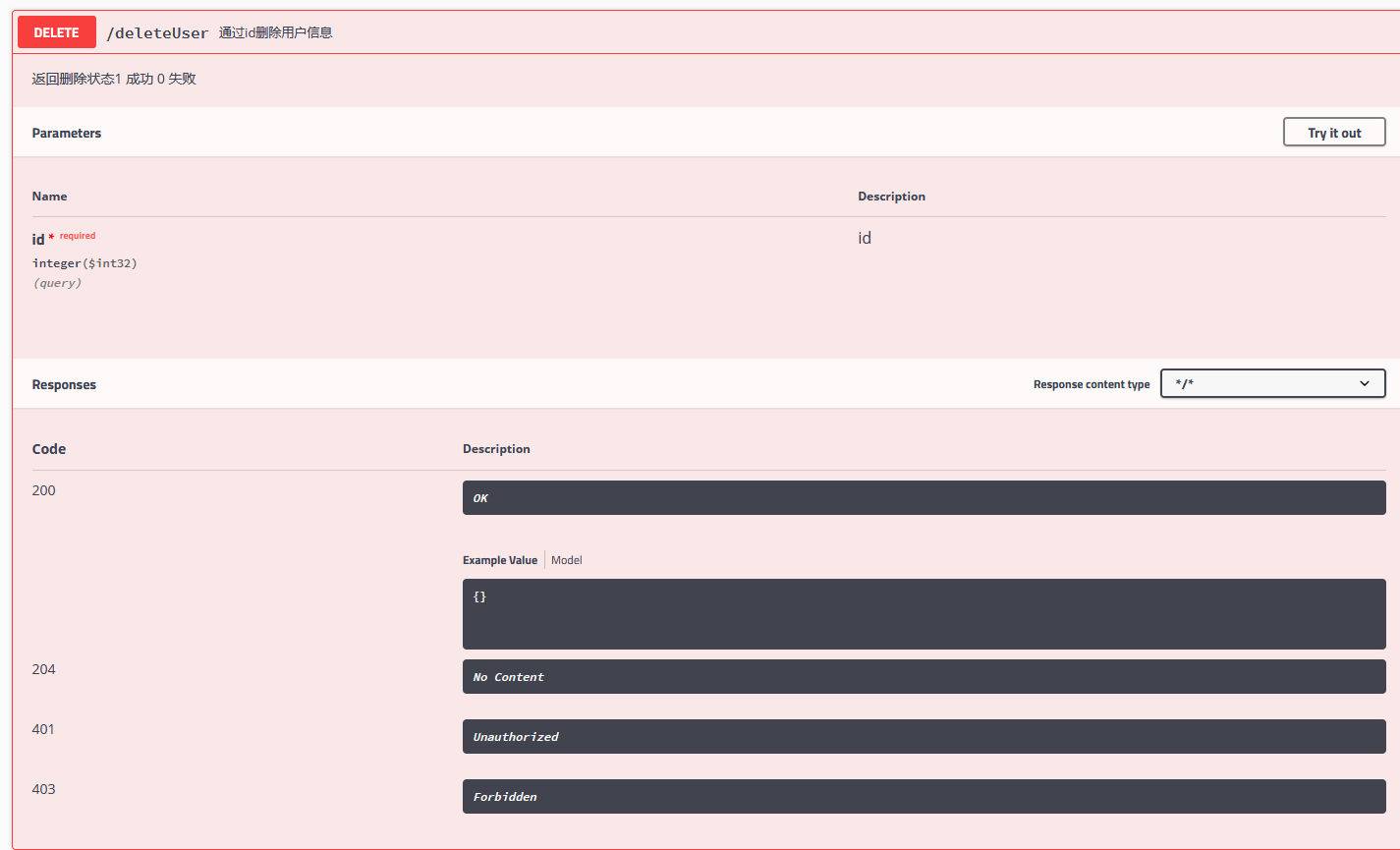
总结
本文项目代码地址:
https://gitee.com/Qinux/springboot_swaggerui